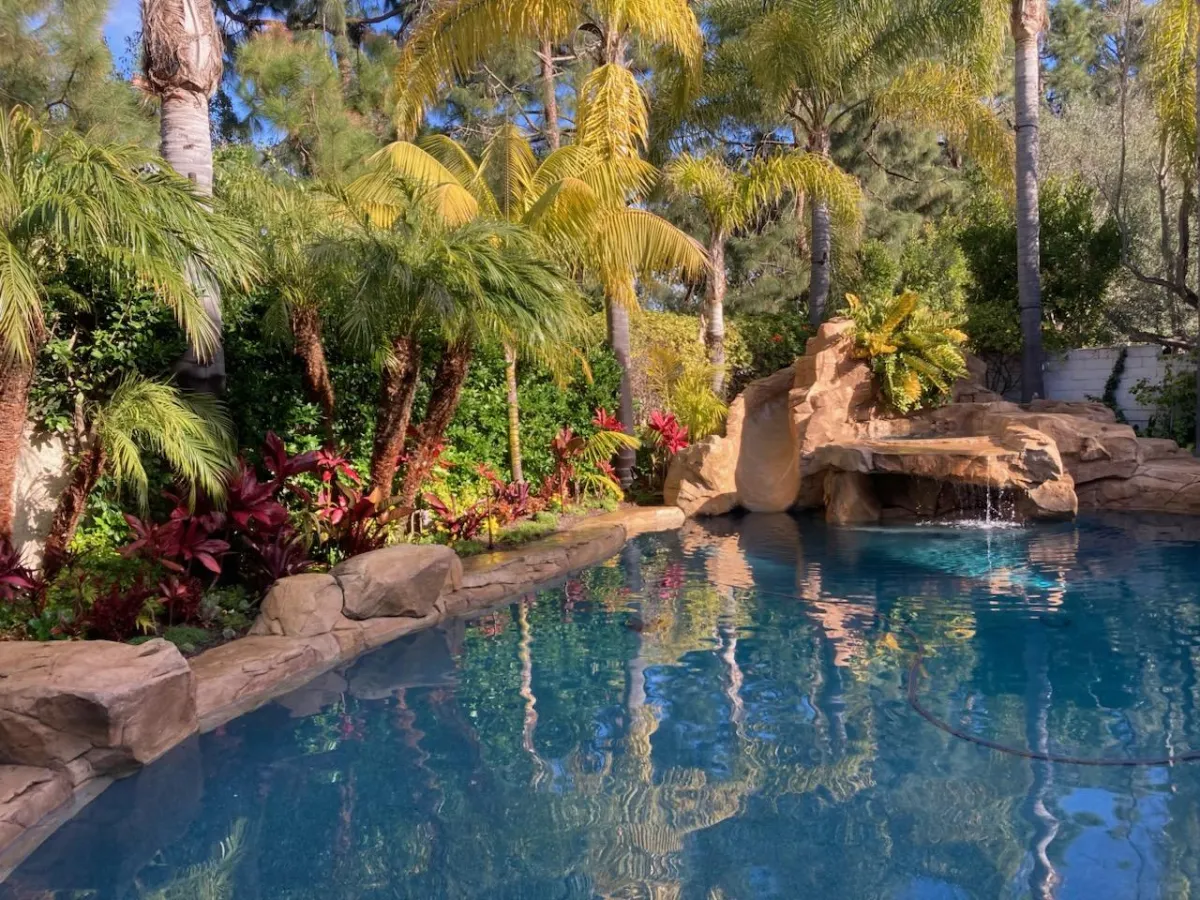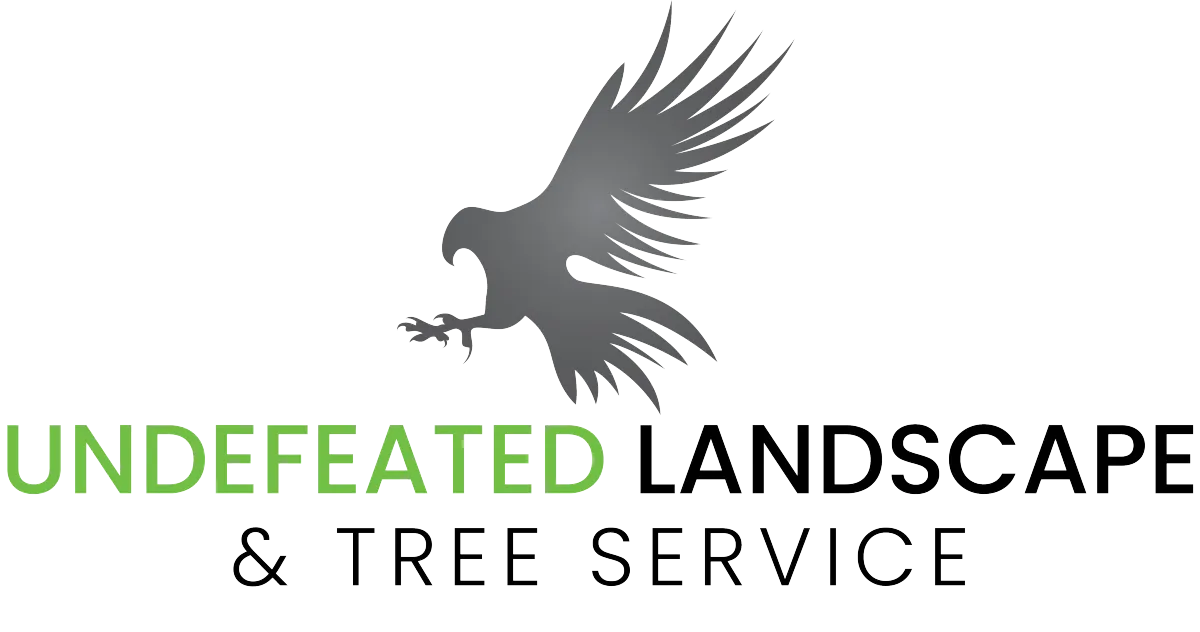Serving Orange County
Blog

Modern vs Traditional Landscaping: Finding Your Perfect Style
Choosing the right landscaping style for your home can transform your outdoor space from ordinary to extraordinary. The style you pick not only affects how your home looks from the outside but also how you enjoy your yard every day. With so many options available, the choice often comes down to two main approaches: modern or traditional landscaping.
The best landscaping style for your home depends on your home's architecture, your personal taste, and how much maintenance you're willing to do. Modern landscaping works well with contemporary homes and offers clean lines with less upkeep, while traditional landscaping complements older homes with its classic, natural beauty and timeless appeal.
Before diving into a landscape renovation, it's worth understanding what makes each style unique and which one might better suit your needs. This guide will walk you through the key differences between modern and traditional landscaping approaches, helping you make an informed decision for your home's outdoor spaces.
Understanding Modern and Traditional Landscaping Styles
Key Features of Modern Landscaping
Modern landscaping emerged in the mid-20th century alongside contemporary architecture. It breaks from the natural, flowing designs of the past in favor of geometric patterns and structured spaces. This style emphasizes clean lines, minimalism, and functionality.
The modern approach often incorporates:
Bold, geometric hardscaping with concrete, metal, or composite materials
Minimal plant varieties arranged in organized groupings
Clear separation of spaces with defined purposes
Water features with clean edges and simple shapes
Outdoor living spaces that function as extensions of the home
Modern landscapes often have an artistic quality to them, with plants and features arranged to create visual impact rather than to mimic nature.
Defining Elements of Traditional Landscaping
Traditional landscaping draws inspiration from European garden designs and natural landscapes. These gardens aim to create a harmonious connection with nature and often feature:
Curved pathways and flowing lines
Natural materials like stone, wood, and brick
Abundant plantings with diverse species and colors
Lush lawns as central features
Classical ornaments such as fountains, statues, or birdhouses
Traditional designs typically feel more relaxed and less structured than their modern counterparts. They celebrate seasonal changes and natural growth patterns rather than trying to control them.
The Evolution of Residential Landscaping Trends
Landscaping styles have evolved significantly over time, reflecting changing attitudes toward nature, property use, and maintenance. While formal gardens dominated wealthy properties for centuries, the mid-20th century saw more homeowners embracing simplified landscapes that required less maintenance.
Today's trends show many homeowners seeking a balance between beauty and functionality, with growing interest in:
Environmentally friendly landscaping practices
Drought-tolerant and native plant selections
Outdoor spaces that support family activities
Gardens that attract pollinators and wildlife
Understanding these trends can help you create a landscape that feels current while still matching your personal style preferences.
Modern Landscaping: Clean Lines and Contemporary Appeal
Design Elements and Materials in Modern Landscapes
Modern landscapes prioritize structure and form over natural chaos. Key materials often include:
Exposed concrete for patios, paths, and retaining walls
Metal accents in steel, aluminum, or Corten steel
Large-format pavers with minimal joints
Gravel or decomposed granite for pathways and accent areas
Glass or acrylic elements for screens or water features
These materials create a backdrop for carefully selected plants and outdoor furnishings. Modern designs typically feature strong horizontal and vertical lines that guide the eye through the landscape.
Plants Commonly Used in Modern Landscaping
Plant selection in modern landscaping focuses on structural forms rather than showy flowers. Popular choices include:
Ornamental grasses like blue fescue or Japanese forest grass
Architectural plants such as agave, yucca, and New Zealand flax
Clipped hedges in simple geometric shapes
Specimen trees with interesting bark or branch patterns
Mass plantings of a single species for dramatic effect
These plants are often arranged in geometric patterns or straight rows, creating a sense of order. Color palettes tend to be limited, with an emphasis on greens, blues, and silvers rather than bright blooms.
Maintenance Requirements for Modern Designs
One advantage of modern landscaping is its generally lower maintenance requirements. With fewer plant varieties and more hardscaping, these gardens typically demand less regular attention. However, they do require:
Precise pruning to maintain clean lines and shapes
Regular cleaning of hardscape surfaces
Weed control in gravel areas and between pavers
Irrigation system maintenance for efficient watering
For busy homeowners, modern landscaping can provide a stylish outdoor space without demanding weekend after weekend of garden work.
Traditional Landscaping: Timeless Charm and Natural Beauty
Classic Design Elements and Materials
Traditional landscapes embrace natural materials and flowing forms. Common elements include:
Natural stone for walkways, walls, and edging
Brick or cobblestone for patios and paths
Wood elements like arbors, fences, and benches
Mulched planting beds with curved edges
Water features with natural-looking edges
These materials weather naturally over time, often becoming more appealing as they age. Traditional designs typically feature softer edges and more organic shapes that blend with the surrounding environment.
Popular Plants in Traditional Garden Settings
Traditional gardens celebrate plant diversity and seasonal interest. Typical plantings include:
Flowering shrubs like hydrangea, lilac, and rhododendron
Perennial flowers in mixed borders
Foundation plantings framing the home
Shade trees providing cooling canopies
Flowering bulbs for spring color
Roses and other classic garden flowers
These gardens often incorporate plants with historical or cultural significance, creating connections to gardening traditions of the past.
Upkeep Considerations for Traditional Landscapes
Traditional landscapes generally require more regular maintenance than modern designs. Homeowners should be prepared for:
Regular pruning of diverse plant materials
Seasonal clean-up of leaves and spent flowers
Mulching planting beds annually
Dividing perennials every few years
Lawn care including mowing, fertilizing, and weeding
While maintenance demands are higher, many gardeners find traditional landscapes more rewarding because they change throughout the seasons and provide opportunities for hands-on engagement with nature.
Choosing the Right Style for Your Property
Considering Your Home's Architecture
One of the most important factors in choosing between modern and traditional landscaping is your home's architectural style. As a general rule:
Contemporary, mid-century modern, or minimalist homes pair well with modern landscaping
Colonial, craftsman, Victorian, or cottage-style homes complement traditional landscaping
Transitional or farmhouse-style homes can work with either approach or a blend of both
Your landscape should feel like a natural extension of your home rather than a disconnected space. The right pairing creates a harmonious overall property that feels intentional and cohesive.
Evaluating Your Lifestyle and Maintenance Preferences
Be honest about how you'll use your outdoor space and how much time you want to spend maintaining it:
Do you enjoy gardening as a hobby, or see it as a chore?
Do you need play spaces for children or pets?
Do you entertain outdoors frequently?
How much time can you realistically dedicate to yard work?
Modern landscapes typically require less regular maintenance but may need professional help for specialized tasks. Traditional landscapes offer more opportunities for personal engagement but demand more consistent attention.
Budget Considerations for Each Style
Both landscaping styles can be adapted to different budget levels, but certain aspects affect costs:
Modern landscaping costs:
Higher upfront investment in hardscaping materials
Potentially higher costs for specialized design expertise
Lower long-term maintenance costs
Focused plant purchases (fewer varieties but possibly larger specimens)
Traditional landscaping costs:
More moderate hardscaping expenses (often phased over time)
Higher ongoing plant replacement costs
Higher maintenance costs over time
More seasonal investments in annuals and new perennials
Working with a professional landscape designer can help you develop a plan that matches your budget while still achieving the style you desire.
Blending Modern and Traditional Elements
Creating a Transitional Landscape Design
Many homeowners find that a blend of modern and traditional elements creates the most satisfying landscape. This approach, often called transitional landscaping, might include:
Clean-lined hardscaping with softer plant choices
Modern outdoor furnishings within a more traditional garden setting
Structured areas near the home transitioning to more natural spaces farther away
Contemporary materials used in traditional patterns or forms
This blended approach offers flexibility and allows you to incorporate favorite elements from both styles.
Best Elements to Mix from Both Styles
Successful transitional landscapes often combine:
From modern style:
Clean-edged pathways and patios
Simplified plant palette in key areas
Modern lighting solutions
Streamlined water features
From traditional style:
Diverse plant selections with seasonal interest
Natural stone elements
Curved borders in planting areas
Classic garden accents
The key is maintaining consistency in certain elements (like materials or color schemes) while allowing for variation in others.
Case Studies: Successful Hybrid Designs
Many award-winning landscapes successfully blend traditional and modern approaches:
A California property pairs geometric concrete patios with lush, traditional plantings
An East Coast renovation maintains a classic front yard while creating a modern entertainment space in the back
A Midwest garden uses modern metal edging to contain traditional perennial borders
These hybrid designs demonstrate that you don't have to choose entirely one style or the other—thoughtful combinations often create the most personalized and successful landscapes.
Working with Professional Landscapers
When to Hire a Professional Landscape Designer
While some homeowners successfully tackle DIY landscape projects, professional help is valuable when:
You're making a significant investment in your property
Your site has challenging conditions like slopes or drainage issues
You want a cohesive plan that can be implemented over time
You're unsure about plant selections for your climate
You need help blending styles or working with existing features
Professional designers bring knowledge of materials, plants, and construction techniques that can save you from costly mistakes.
Questions to Ask Before Starting Your Project
When interviewing landscape professionals, consider asking:
What style do they specialize in?
Can they provide examples of similar projects?
How do they approach maintenance considerations?
What is their process for developing a design?
How do they handle budget constraints?
What timeline should you expect for design and installation?
Finding a professional who understands your vision and communicates clearly will make your landscaping project more successful.
Maintaining Your New Landscape
No matter which style you choose, proper maintenance is essential:
Establish a regular maintenance schedule
Invest in proper tools and irrigation
Learn basic care techniques for your specific plants
Consider professional maintenance for specialized tasks
Plan for periodic refreshing of mulch, plants, and hardscape elements
With proper care, both modern and traditional landscapes can provide enjoyment for many years.
Conclusion: Making Your Final Decision
Choosing between modern and traditional landscaping—or creating a blend of both—is ultimately about what feels right for your home and lifestyle. Consider your property's architectural style, your maintenance preferences, and how you want to use your outdoor spaces.
Remember that landscaping is never truly "finished"—it evolves over time as plants grow and your needs change. The best landscapes, whether modern or traditional, grow more beautiful with age and proper care.
Need help bringing your landscaping vision to life? Undefeated Landscape and Tree Service specializes in both modern and traditional landscape design in Orange County. Our expert team can help you create the perfect outdoor space with our comprehensive services including new garden landscape design, landscape maintenance, drip system irrigation, tree trimming, tree stump removal, stump grinding, and privacy hedges installation.
Your landscape deserves the best—contact Undefeated Landscape and Tree Service today to transform your outdoor space into a beautiful extension of your home that fits your style perfectly!
© 2025 All Rights Reserved | Undefeated Landscape and Tree Service
